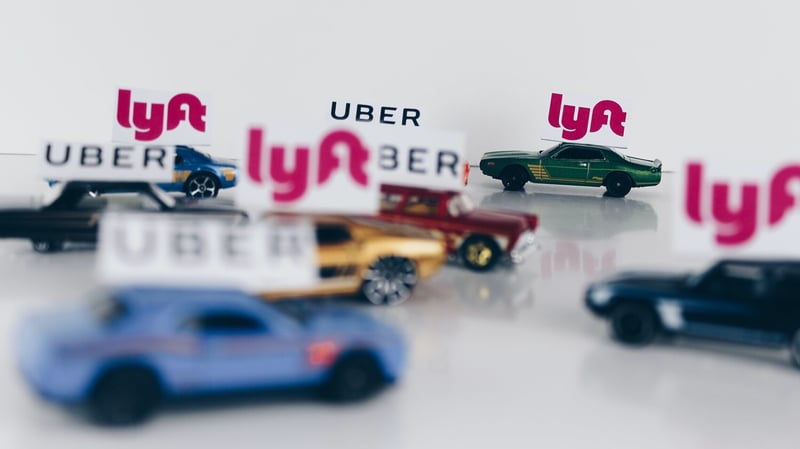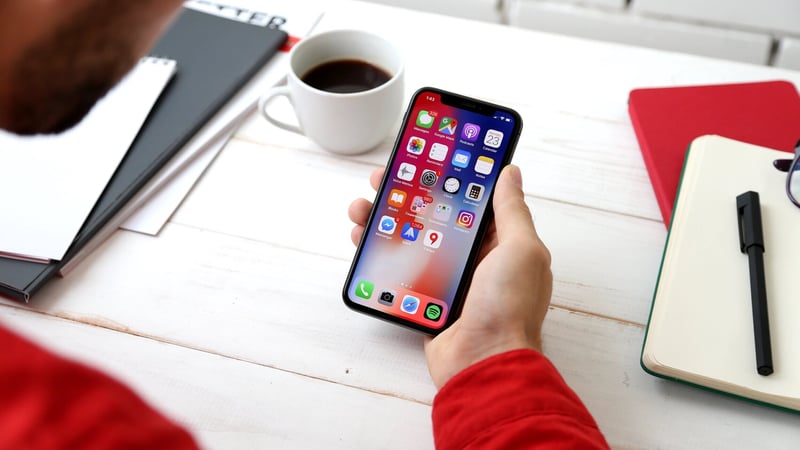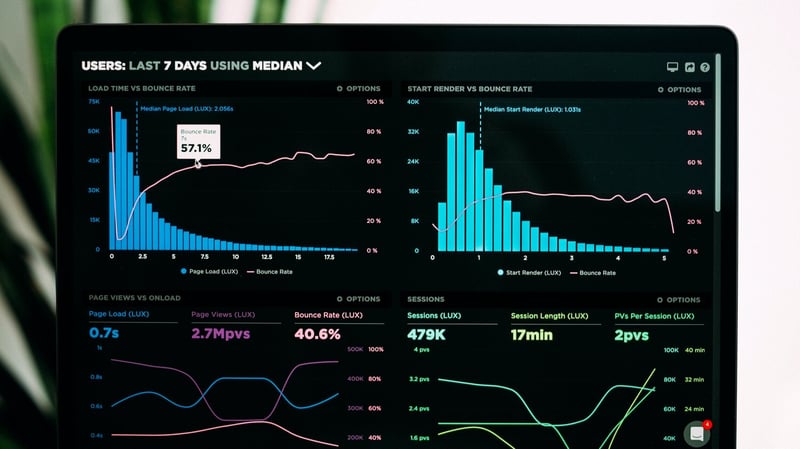5 Ways to Create a Continuous Learning Culture
TABLE OF CONTENTS
Last week we discussed what continuous learning is, and why creating a continuous learning culture is crucial to the overall success and longevity of your company. (If you missed it - have a read here and we’ll see you in 10!).
It’s one thing being aware of how beneficial continuous learning is to your company. Executing a continuous learning strategy, and creating a culture of continuous learning is a different ball game.
Once you’re up to speed on why you should invest in it, your next question is likely “what can I do to actually bring continuous learning from theory into practice, and become a company with a consistently high performing, engaged workforce?”
We’ve compiled a series of steps you can take to get started below.
First, you’ll want to…
1. Choose the right tool
There are many 'Learning Management Systems' and remote employee training tools out there. Choosing which one suits you best will depend on things like: how big your workforce is, who your workforce are(a 9-5er or a Deliveroo driver?) and where they operate are (at an office, or remote).
At eduMe we believe learning should be available on-demand. On-demand learning is learning that is available to learners anywhere and at any time. It’s important because it puts power back into your workforces’ hands - they learn on their own terms. When learning is self-paced, performance levels increase, making it more effective.
The ideal learning solution indefinitely stores any content you create so that learning never expires and can be accessed remotely and as many times as a learner wishes. And, vitally, the ideal tool is also highly accessible.
When you provide learners with accessible learning, it's infinitely more likely to be completed, as all that's needed is an internet connection and a device (computer, tablet or smartphone). No usernames, complicated steps to get started or log-ins necessary - these all act as barriers to learning. Gone will be the days of sternly worded reminders to complete mandatory compliance courses.
In the future, accessible learning will also mean learning that is available via smartphones or tablets specifically. Being able to provide training remotely through smartphones and tablets is essential for building a future-proof organisation, because the structure of the global workforce is changing to prioritise these mediums.
How? The workforce is becoming more ‘liquid’, or mobile. Mobile workers don’t - typically - even have a laptop to hand during a working day. So the right tool should also possess the capability to disperse learning to mobile technology.
Once you’ve chosen the right tool to propagate your materials to your people, you need to establish what it is your workforce needs to know to be able to perform better. You do this by...
2. Identifying knowledge gaps
What is it you want, or need, to improve? There are the legal requirements and must haves, like mandatory lessons on health and safety, and compliance.
Other things you need to cover may be things that come obviously to you. For instance, if you are a ride hailing company like Uber or Lyft, and drivers are consistently getting bad ratings from riders, which is having a knock-on negative impact on your company’s reputation.

In this scenario, it’s apparent that what is needed are a series of lessons around how to improve customer service, delight customers and raise individuals’ ratings. These lessons should include concrete examples that your workforce can put into practice, like being timely, or providing refreshments like water or chewing gum.
But there are other ‘invisible’ knowledge gaps that aren’t mandatory or obvious. An overlooked method to identify these less overt knowledge gaps - is to simply ask your people.
Creating a feedback loop has mutual benefit - when your people feel heard, they are 4.6x more likely to perform at their very best. But it is important for creating a continuous learning culture too. Hearing directly from your people about what they need in order to carry out their role optimally is essential to improving performance.
This is one of the primary reasons we created Surveys in eduMe - to empower your people with a voice. The particular type of survey with the highest completion rates are ‘pulse surveys’. Because of their short length, completion rates are higher. They are also both easier for you to create and only take a moment for your people respond to.
So push out single question, multiple answer surveys frequently to shed light on those less obvious knowledge gaps in an effective and engaging way.
3. Leverage engaging content formats
It’s not just about choosing the right tool for you and identifying knowledge gaps.
The way the learning is ‘packaged’ is important too. Microlearning - learning that consists of information that is delivered in 3-5 minute bite-sized chunks - is a way of learning that reigns supreme.
Why? Microlearning works so well as it’s ‘packaged’ in just the right way to cater to our shortened attention spans. The average attention span was down to 8 seconds in 2015 from 12 in 2013. Considering attention is so hard to command, if the learning you’re delivering is lengthy and convoluted - e.g. five half an hour videos that require watching in succession - the information contained within the ‘packaging’ is guaranteed to go in one ear and out the other. The information contained within these videos is valuable, but the ‘packaging’ is failing the contents of the learning.
Microlearning is also most suited to what the future of work will look like, that is - mobile, remote, made up of millennials and oriented around smartphones. (We elaborate more on that here). We used to consider this shift as a change in progress, one that’d begun but hadn’t yet been fully realised. Willingly or not, we’ve all undergone a COVID-19 induced shift that’s propelled us into the future - remote work is now our present day reality.

But casting an eye to the actual future for a moment - if a remote worker is on-the-go, they want to be able to receive learning that complements this, i.e. is brief and relevant.
Microlearning is essential but it is also just a vehicle for the content. As we just touched on, the content itself also needs to be engaging in order to be successful. Engaging content formats you can utilise within the ‘packaging’ that is a microlearning include:
-
Images. Can be used to give visual aid to knowledge or scenarios. E.g. ‘familiarise yourself with this map' of the office’, or car layout. ‘What would you do in this situation?’, or ‘what’s wrong in this picture?’ and so on.
-
GIFs. GIFs are useful for exemplifying an action. E.g. in a course related to food hygiene, you could include a GIF on correct hand washing
-
Videos. These could be on anything from daily mission-aligning messages from C-Suite to videos where high performers share their tips and tricks remotely with peers.
-
Quizzes. Incorporate quizzes within lessons to trigger active recall and help commit any knowledge dispersed to long term memory
Of all of the above, video is especially effective - we understand visual information in 250 milliseconds and it activates over 50% of our brains. Learning delivered in a video format is 95% more likely to be retained than information that is just read.
4. Reward learners
Incentivise learners to complete learning by offering rewards. Rewards can be tangible (e.g. financial remuneration/perks) or intangible (e.g. managerial praise).
Money is an obvious motivator. But if you aren’t able to tangibly reward individuals (with a bonus, for example) you can still indirectly use money as a motivator. Compile a series of lessons centred around best practice for making more money. For example, how to get more tips.

Another way to tangibly reward your people is by highlighting their performance publicly. This could be done via an ‘employee of the month’ scheme, or an employee recognition platform like bonus.ly.
Send out a notification, message or video about why they’re being acknowledged and what they did to achieve this, to provide a template for others to replicate. Better yet - have them speak for themselves. For example - a video where they share their personal tips for excelling. Peer-to-peer learning is powerful - 55% of people prefer to consult or learn directly from peers, ahead of consulting Google or their managers.
A gamified learning experience is also a great way to incentivise continuous learning. ‘Levelling up’ and gaining points in exchange for completing lessons or courses triggers dopamine release in the brain, which increases learners' desire to repeat a behaviour again.

Having Leaderboards, or providing some form of insight as to where a learner sits compared to their peers, builds healthy competition while also creating a sense of community - that there are others out there, doing the same thing.
5. Track, analyse and survey
You’ve acknowledged visible knowledge gaps, reached out to your workforce about less obvious gaps, provided them with engaging content to bridge those gaps, and motivated them to complete learning through tangible rewards. What next?
As you did to begin with, identify new, or the next knowledge gaps that need to be bridged. Any good remote training platform will have reports and analytics that break down team and user performance. How many lessons did they complete? What was the average score?

Having these sorts of insights to hand allows you to set up personalized triggers. If someone’s not completed something, nudge them with a push notification. If they have completed it, but not to a satisfactory standard, push out a refresher course.
eduMe has an API that triggers content when certain ‘events’ happen. For example, if a learner’s customer rating has dropped below what you’ve set as a minimum, a refresher course will be automatically sent out to them without any additional action or input required from you.
Utilise pulse surveys to check in with your workforce on a range of topics, from their wellbeing and mental health to their thoughts on a course. They can be sent as follow-ups to existing lessons - for example ‘how useful did you find this lesson?’ with a simple yes/no response. If you are getting an overwhelming amount of ‘nos’, send out another survey that lists options for areas of improvement.
This way you will be able to keep a finger on the ‘pulse’ of your workforce and open up lines of communication, so that it is not just a one-way barrage of information from you to them. Pulse surveys are also integral in sustaining the continuous learning process. Their responses will inform and illuminate what information needs to be made known next.
In conclusion...
Your success is intertwined with the success of your people. By equipping them with the necessary tools to achieve individual success on an ongoing basis, you secure your company’s success in the long term. You are taking a firm measure to future-proof your business.
We refer to this continued, mutual success as Workforce Success.
It’s when you provide your people with the relevant information, communication, skills and a voice to be heard, that empowers them to be their most productive and motivated selves - to perform at their very best.
Want to set your workforce up for success?
Join 10,000+ frontline leaders
Subscribe to ‘Training the Frontline’ and get weekly insights sent straight to your inbox.

